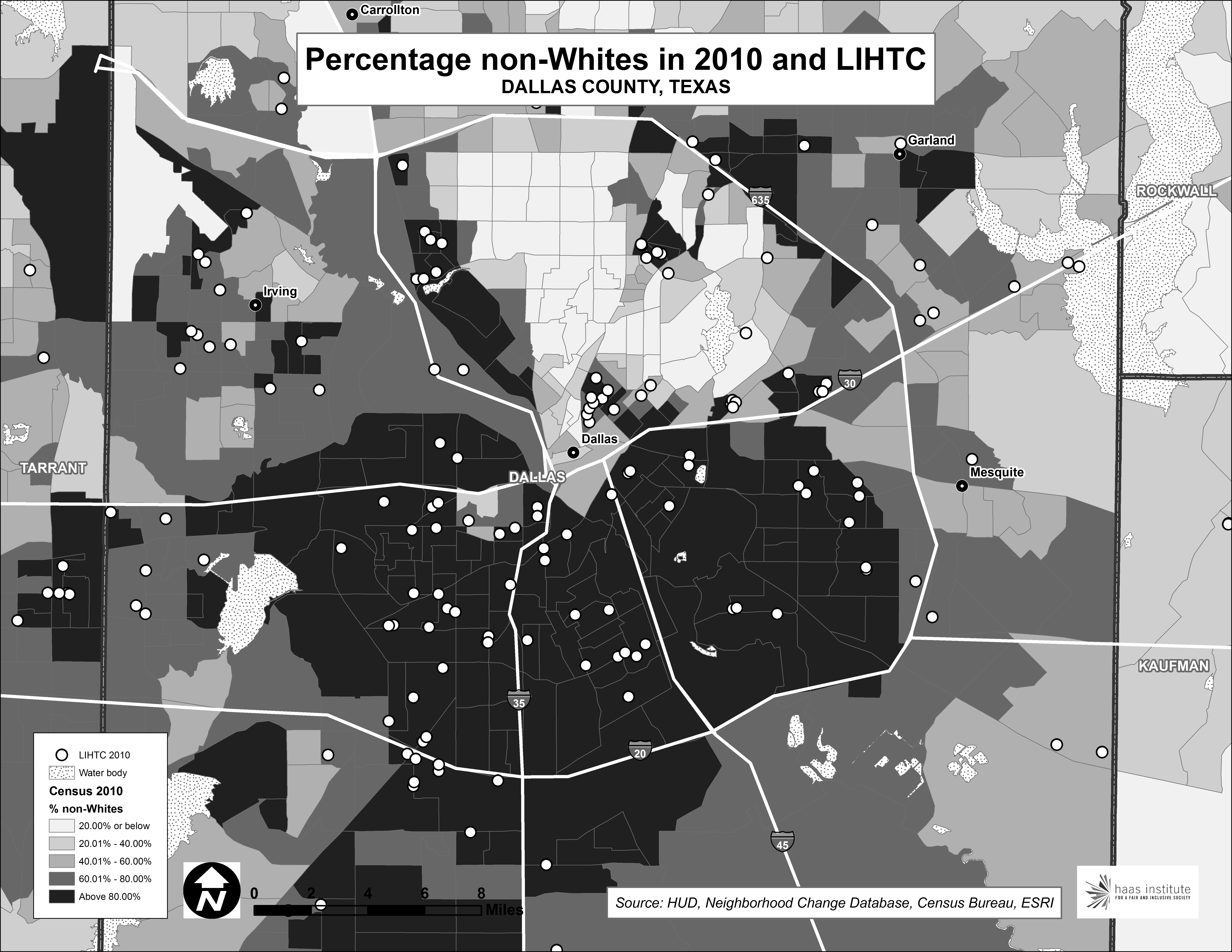For a several years now I’ve observed with growing alarm, then despair, as California’s housing woes—astronomical prices, skyrocketing rents and rates of annual appreciation, knee-jerk opposition to new housing, an epidemic of displacement and homelessness—appeared in a handful of major metropolitan areas, and then became a truly national problem. It seems like a disease that originated in California and a few major coastal cities, and then gradually spread across the country wreaking havoc.
As a housing researcher and fair housing advocate, I have observed firsthand the progression of this disease. I have also witnessed (and advanced) many valiant and laudable—although ultimately unsuccessful—efforts to abate its spread and devise a cure. Like a dog chasing its tail, every achievement—every housing bond measure approved, every new appropriation for affordable housing, every eviction averted—seems outpaced by greater need and ballooning costs.
Despite the absence of a specific external shock or precipitating event, like the Great Depression or the burst of the subprime mortgage bubble, headlines, pundits, politicians and ordinary people routinely complain about a US “housing crisis.” Not infrequently the invocation of a "housing crisis" is modified in some important and meaningful way, as when headlines denote an “affordable housing crisis,” an “urban housing crisis,” a “rental housing crisis,” a “homeownership crisis,” or a “housing shortage crisis,” to take but a few examples.




Caption: A collection of headlines from recent news articles from around the country all using a version of the "housing crisis" frame.
Despite the ubiquity of the “housing crisis” headline and framing, when you listen closely or read beyond the headlines, it becomes clear that they are often referring to different problems, even when using the same terms. Consider the seemingly more pointed label of the “affordable housing crisis.” Even this common phrase is used to refer to quite different problems. In many cases, it denotes the disappearance of starter homes, low-rent apartments or general reduction in the lower-cost segment of the housing market. At other times, however, it is used in a broader sense to refer to the general unaffordability of the median or mean home price in a region or state. And yet, in some cases, it is specifically referring to the rental market rather than housing stock generally or owner-occupied housing specifically.
You are probably wondering if these various problems are related, such that they can be viewed as part of a larger “housing crisis.” Although many of these problems are related, that does not mean that they are merely facets of the same problem. In fact, even as they share some of the same causes, many of these problems also have different contributory causes, and therefore require different and specifically tailored solutions. There is no silver bullet to solving each of these problems simultaneously and completely. We need an array of tools and interventions coming from different directions.
There is no single "housing crisis"; rather, there is a cluster of dysfunctions and disturbing circumstances in housing, some of which are related, some of which are not, and some of which are only partially related.
In fact, viewing these various problems as expressions of the same underlying problem is actually part of the problem: it is an impediment to understanding and recognizing the distinctive causes and solutions required to address these problems. To that end, this article makes two overarching claims:
First, there is no single "housing crisis"; rather, there are a cluster of dysfunctions and disturbing circumstances in housing markets, many of which are related or intertwined, some of which are not, and some of which are only partially related. The etiology of these various "crises" is complicated, with many contributory factors, contemporary and historical. Viewing them as a largely undifferentiated crisis has a problematic tendency to mask these differences, and therefore the different and multiple interventions that are required to solve them. This web of problems and dysfunctions helps explain why our current predicament feels simultaneously unusual and intense (a “crisis”) and why it is so difficult to solve.
It is not just an analytic error to view these problems as emanations of the same root or overarching problem. It is a practical impediment to crafting effective solutions. The interrelationship of these problems is a double-edged sword. To the extent that these various crises are related, interventions aimed at one problem can improve and ameliorate related housing problems, or exacerbate and worsen them.
This is the second major claim of this article: efforts aimed at solving some of these dysfunctions have a dangerous potential to make other housing problems worse, and insufficient attention has been paid to this risk. By viewing these problems as a generally undifferentiated mass of interrelated issues, we undermine our capacity to solve them.
In this article, I will break down the “housing crisis” into 13 distinct problems, and then present four different case studies showing how efforts to solve one problem can worsen or have no discernible effect on others. I will close with some guidance on how we can advance an agenda capable of addressing all of these problems.
Breaking Down the "Housing Crisis"
To illustrate critical differences among the aspects of housing in crisis, consider 13 distinct problems that may fall under the header of the "housing crisis," or be reasonably characterized as a housing crisis:
First, there is a lack of housing available to lower-income and low-wealth individuals and families.
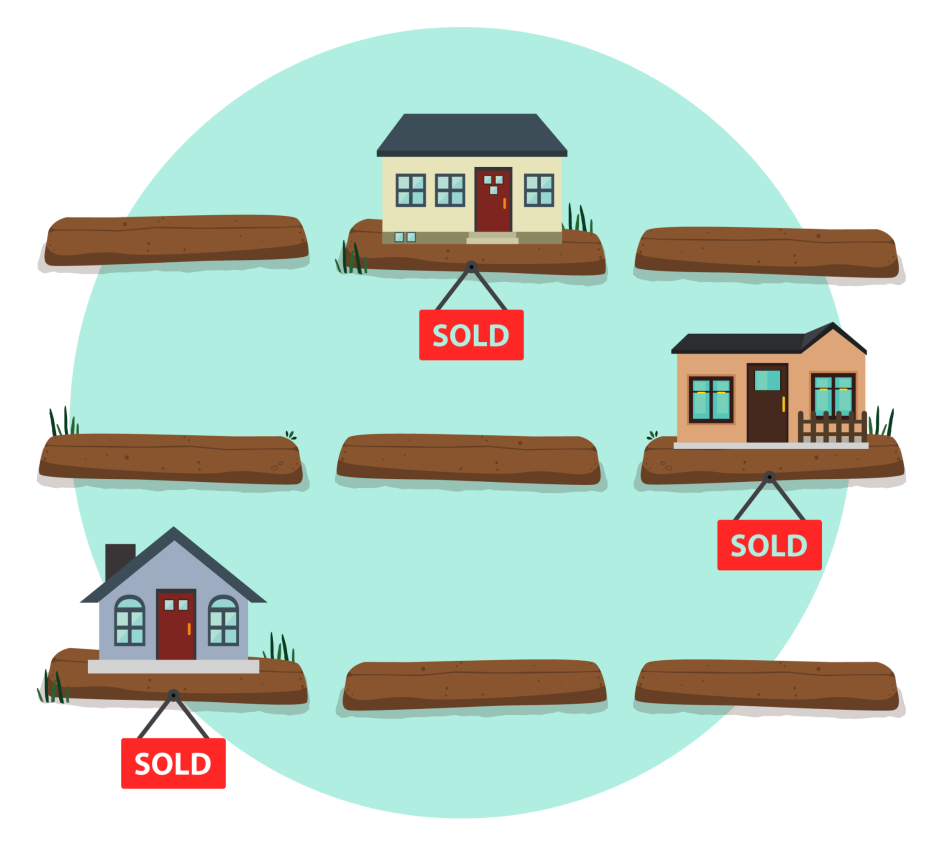
In many metropolitan areas, starter homes and inexpensive apartments have disappeared from the market, and the least expensive housing is now painfully out of reach for purchase or even rent without assistance or subsidy. Housing stock that was once more affordable has become far less so, and fewer homes are filtering into the affordable range over time. As a result, low-income workers are forced to spend an ever-greater share of their incomes on housing, with dire consequences for their health and well-being. This is often what is meant by the affordable housing crisis.
But it can also mean something else, as illustrated by the next problem.
Second, the median (or mean) price of housing has become too expensive.
In too many housing markets, housing is now out of reach, not only to low-income or low-wealth individuals, but to a broad swath of middle income and even upper-middle income earners. In California, for example, the median single-family home price is $883,370, with a minimum qualifying income of $199,200 (as of August 2022). This is the other main sense in which some people refer to an "affordable housing crisis." The problem here is not primarily the disappearance of lower-end housing stock or the lack of housing available to lower-income people specifically, but that the median home is now too expensive for middle-income earners, and becoming more so year after year. From 1975 through 2022, the annual price of housing rose by 4.6 percent (and an astonishing 6.7 percent increase in California!). That's faster than wages and even economic growth in that period.

Although these problems may be related, it is at least theoretically possible that the market might fail to produce sufficient housing for low- and very low-income people while median home prices remain affordable to most middle-income earners (it is harder to envision how mean prices could remain stable, in that case, however). In contrast to the affordable housing crisis, this crisis is sometimes denoted the housing affordability crisis, although the two are generally conflated.
Third, there is a severe “rental housing crisis.”
In the housing literature, this generally refers to the ever-growing percentage of incomes that are spent on rents. In the parlance of this literature, it is also described as "housing cost burden" or "severe housing cost burden," when 30 percent or 50 percent or more of incomes are spent on rents, respectively. In 2014, a shocking report found that, as of 2012, nearly half of the nation’s renters were housing cost burdened.
This problem has only gotten worse ever since, with an acute crisis for the number of people who are severely housing cost burdened.
Fourth, there is a housing production deficit problem, also known as the “building crisis,” or the “housing shortage.”
Housing starts peaked in absolute terms in 1972, even though the US population has grown by 60 percent. The United States produces far less housing on a per capita basis than it did in previous generations, and the housing it does produce is far more expensive on a per unit basis. The subprime mortgage crisis pushed many elements of the housing construction industry out of business, making it harder to find skilled labor. Building materials, and not simply labor inputs or the costs associated with developmental approvals and other regulations, are also far more expensive.
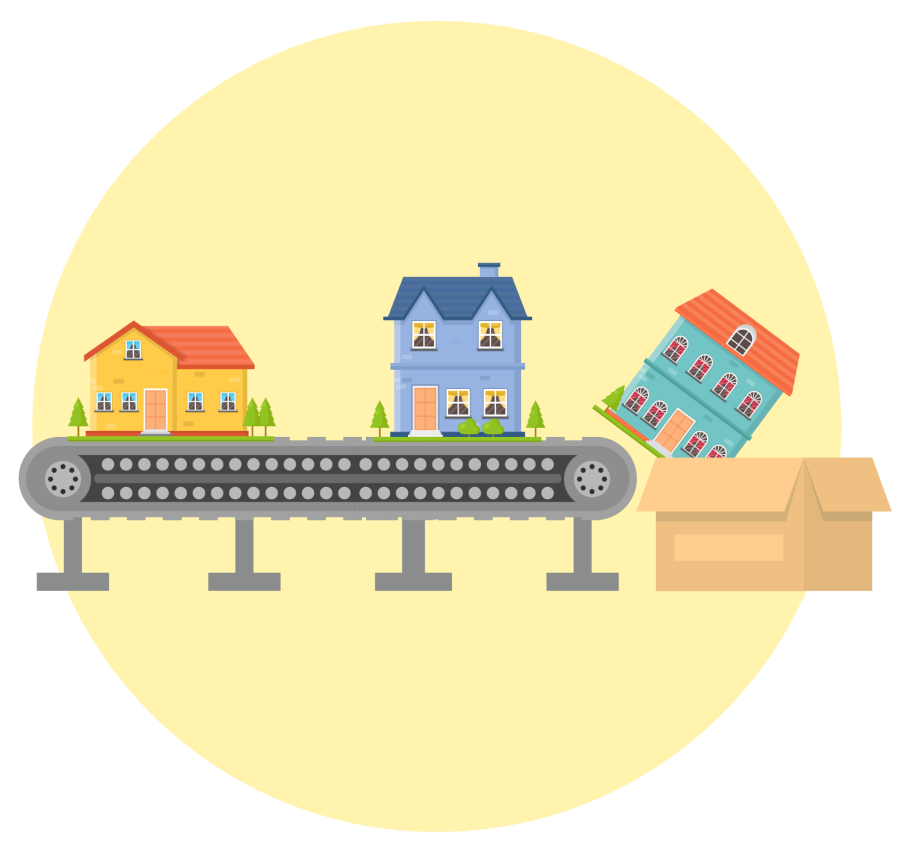
Fifth, there is a jobs/housing imbalance problem.
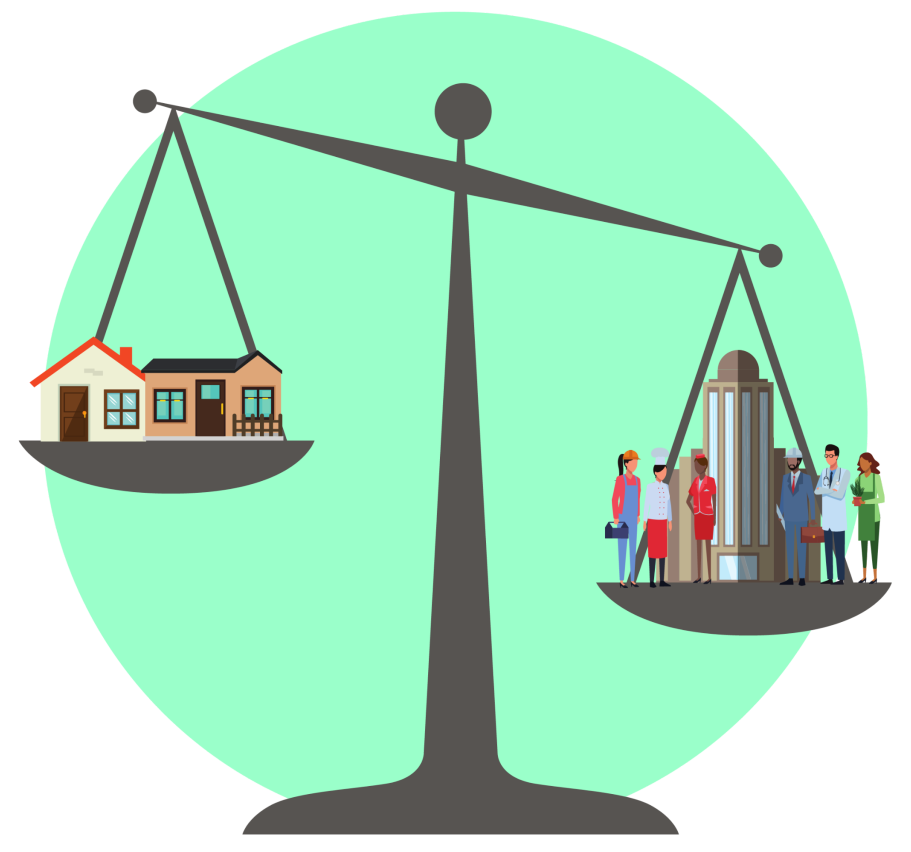
Some critics of the claim that the US has a housing shortage point out that, at least in this century, housing starts have kept up with population growth. Even if true, that doesn’t mean that housing is being produced in the best places. The jobs/housing imbalance problem is that the location of jobs and the location of new and existing residential housing is deeply out of sync. We are not building enough housing in the same places or near the same places where job creation is strongest.
This used to be called the “spatial mismatch,” a term coined to describe the pattern between where Black Americans reside and where jobs and job growth appeared most robust. But this has become a more general phenomenon, where housing production is often strongly inhibited in places where new jobs are being created at the fastest clip, pushing new housing starts further away from job centers. One consequence of this problem has been the rise of the so-called "super-commuter," an ever-growing fraction of workers who have to commute unhealthy distances and spend too much time to reach their jobs.
Sixth, there is a related problem of the jobs/housing fit.
It is not enough to ensure that there are enough new housing units to serve new workers lured by new jobs, but that the type of housing and the cost of housing is tailored to serve the jobs that are being created. So, for example, it does not help to build ample five-bedroom homes for empty-nest seniors or one-bedroom or studio housing units for lower-income wage workers heading families with several children. Housing needs to be located proximate to jobs, but that housing must also match as closely as possible in form and price the needs and of those workers.
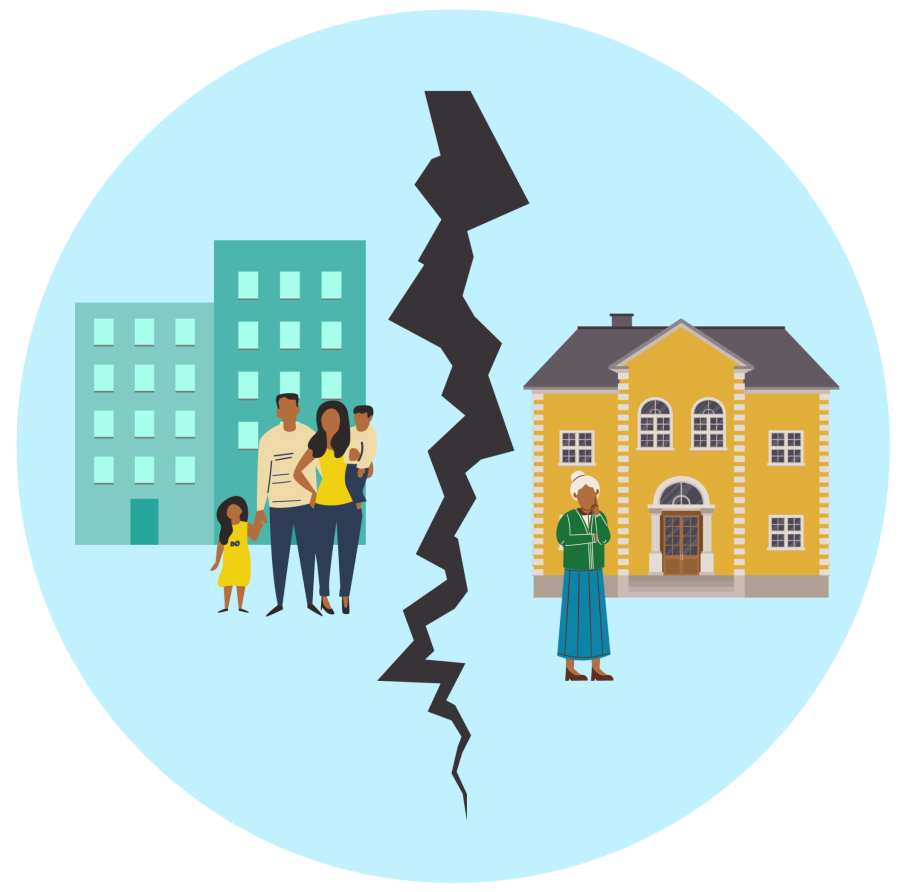
Seventh, there is the problem of sprawl.

This is an environmental problem in which more and more housing developments push into the exurban fringe, not only farther than ideal from jobs, but also from existing infrastructure (water, sewage, transit, etc.) and into greater hazards, such as wildfire interface or low-lying flood zones. Also, and perhaps more importantly, sprawl leads to more carbon emissions, as workers are forced to commute longer distances to connect their homes to their jobs.
Eighth, there is an eviction crisis.
Matthew Desmond has powerfully illustrated (and now heads a lab which tracks) the devastating nature of this crisis. Like long-commutes, evictions are associated with a host of deleterious health and psychological consequences for families and children. Both our deeper understanding of the nature of this crisis and its deleterious effects, and the magnitude of it are relatively recent developments.

Ninth, there is a homelessness crisis.

Homelessness was once viewed as an aberrant phenomenon, occurring during the Great Depression or other rare economic crises. But it is now understood as an endemic and pervasive phenomenon, as the overall number of unsheltered people grows. Moreover, there is a more nuanced and better understanding of how homelessness has profoundly negative effects on physical and mental health and well-being, far beyond the general instability of being unsheltered.
Tenth, there is a gentrification and displacement crisis.
Gentrification—nominally the conversion of renter-occupied housing stock into owner-occupied stock—is not a new phenomenon. But what has been largely new in the last 10-15 years is the massive influx of "creative class" young professionals into formerly working class communities in the urban core—often communities of color—resulting in both massive displacement of long-time residents and rapid cultural and demographic change.

Eleventh, there is a worsening racial divide in homeownership rates.

There is nearly a 30-point gap between Black and white household ownership rates (75 to 45 percent nationally, and 63 to 36 percent in California). Black rates of homeownership peaked just before the subprime mortgage crisis, and have never fully recovered while white homeownership has soared to record levels in recent years, despite the affordable housing crisis. This partly explains the persistence of the racial wealth gap, which itself contributes to the differential rates of homeownership by race.
Twelfth, there is a serious problem of exclusionary zoning.
This is abuse of local land use authority, most notably the zoning power, to manipulate development patterns. Municipal regulation of housing development was originally designed for racially exclusionary purposes, although evolved to keep noxious uses separate from residential areas. Unfortunately, it has evolved again to become a powerful instrument of race and class exclusion, where affluent and well-resourced communities leverage the power of local government to erect barriers to not simply accessing housing but controlling the type and form of development. This contributes to the housing production problem and the maintenance of racial residential segregation, and is also a problem in its own right.

Thirteenth, there remains a fair housing crisis.
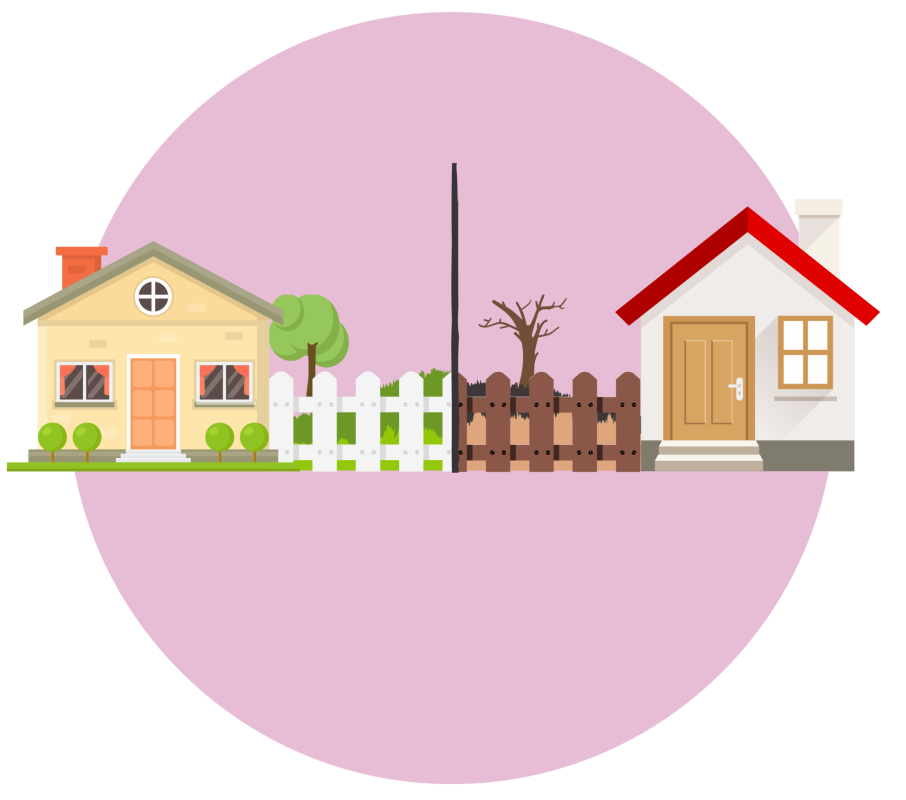
Racial residential segregation, according to some measures, has actually risen in the past 30 years, and even where it has fallen, it remains shockingly and unacceptably high for too many American metropolises. Although racial residential segregation fell in the immediate decades after the enactment of the federal Fair Housing Act, Americans of different races too often reside in racially distinct and isolated communities. As a result, Black, Latino and white Americans live in largely sociologically distinct environments in terms of their access to well-resourced schools, healthy neighborhoods, amenities and good jobs. The consequences of segregation for the propagation of racial inequality in society are profound.
This enumeration is not necessarily exhaustive, but it is hopefully illustrative of the reality that there are many problems associated with housing that are acute enough to be characterized as a crisis, and that there are often glossed-over differences and critical nuances between these problems.
As you read through them, you may have formed a sense of the relationship between them, sorting some into "causes" and others into "symptoms." Although I noted the interrelated nature of many of these problems, the enumeration itself suggests that not every problem is connected to another, at least not in a direct or even second-order relation. My next task is to show that viewing these problems as simply facets of a single, overarching crisis is a mistake both analytically (in terms of the cause, nature and effects of the problem), as well as, and even more so, in terms of the policy solutions.
To maintain that these problems flow from the same cause and require the same solutions is akin to the assertion that the lethality of cancer, heart disease and COVID-19 (three leading causes of death in the United States) are products of the same root problem. They may interact or share underlying contributory factors (such as smoking), but they arise out of a different constellation of causes, and more importantly, require different interventions for treatment. Much like a COVID-19 vaccine is not a cure for cancer, solutions for one aspect of the crisis will not only fail to address other aspects of the crisis, but, in the housing context especially, have an overlooked dangerous potential to make them worse. To persuade you of the veracity and significance of this insight, I will present four cases pertaining to the crises on my 13-item list which illustrate this principle.
Case 1: Affordable Housing and Homelessness
To appreciate how distinct some of these severe housing problems are, consider more deeply just two problems on the foregoing list: the lack of affordable housing available to low-income families, and homelessness. If you assume that these problems are one and the same (or to a considerable extent the same problem), then the solution is relatively simple, at least analytically: simply build more affordable housing. Unfortunately, simply building more affordable housing is a necessary, but not a sufficient condition to solving homelessness.
Although many Americans unjustly assume that unsheltered people must suffer from addiction, mental illness, disabilities, or prefer living in tent cities or the streets, there are non-trivial portions of the unsheltered population who do suffer from addiction or untreated psychiatric disorders or other conditions. As a consequence, making housing "affordable" does not mean that each of these people can be adequately served. If someone cannot hold a job because of PTSD or lack of medical care, then making housing lower-cost will not ensure that they have shelter. Even within deeply subsidized housing, missing rent due to medical bills or losing a job can result in eviction.
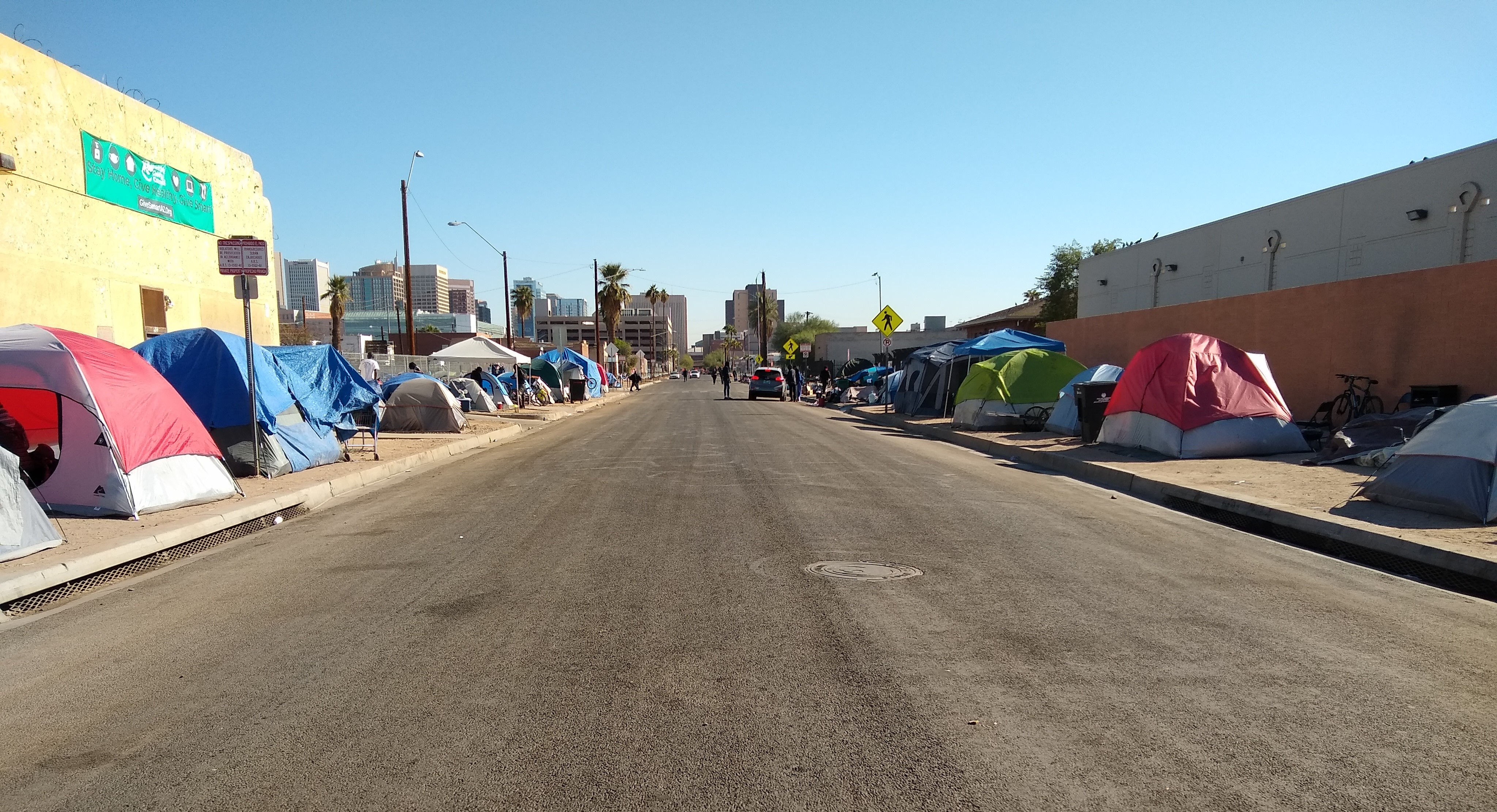
A street lined with tents in Phoenix, Arizona. Source: Wikimedia.
Research has shown that permanent supportive housing (which is not the same thing as merely "affordable" housing) must be coupled with income assistance to be effective in reducing homelessness and producing long-term housing stability. Case-management and health care services improve outcomes even further. But the point is simple: affordable housing, by itself, will not solve the problem. That does not mean it won’t make a huge difference, but that is not the same thing as a "solution" in any meaningful sense of the word.
The comprehensive solutions that solve or substantially (90 percent +) reduce homelessness require more than simply producing affordable housing. But what about the reverse? It should be equally plain that those comprehensive interventions for solving homelessness are not going to solve the problem of a lack of affordable housing. Even if every unsheltered person in the United States was given the platinum plan of case-managed permanent supportive housing, income assistance, and comprehensive health care, that would not even come close to solving the affordable housing crisis or its harmful effects.
Even if every unsheltered person in the United States was given the platinum plan of case-managed permanent supportive housing, income assistance, and comprehensive health care, that would not even come close to solving the affordable housing crisis or its harmful effects.
There is no question that high rents combined with low wages play a significant role in creating more homelessness. But a lack of affordable housing does not ordinarily result in homelessness. In most cases, it results in displacement to lower-cost housing or housing in lower-cost neighborhoods, crowding and doubling up, or simply greater and more intense housing cost-burdens, with a greater share of income going to rent or shelter, and less disposable income, or income allocated to other necessities. Solving homelessness does virtually nothing about these problems.
This is not to say that we should not attack both problems with vigor and determination. Nor does this mean that we shouldn’t pursue a "housing first" strategy to solve homelessness. But we should not fall into the facile trap, too often asserted, that solving one problem will solve the other. Sadly, it will not, in either direction.
Case 2: Super Commuting, Housing Production and Affordable Housing
Consider another aspect of the housing crisis: the so-called “super commute.” The worker who, because of the lack of affordable housing proximate to their job, and whose employer (or due to the nature of their job) does not permit remote work, is forced into long commutes. This is a problem for several reasons. Research is unequivocal that long-commutes are harmful to health. They contribute to heart disease, anxiety and mental health disorders, and stroke. Long commutes, such as those over 90 minutes each way, harm families, as parents have less time with children. But the harms are also to the environment. Long commutes result in clogged highways and more greenhouse gas emissions.
Now juxtapose the housing imbalance problem with the housing production or affordable housing problems: most efforts to produce more housing, especially affordable housing, make the housing imbalance problem worse. How can that be?

Rush hour traffic on Interstate 95 in Miami, Florida. Source: Wikimedia
Because of intense NIMBYism and the high costs of land in the urban core, affordable housing developers often look at the exurban fringe for possible development sites. It is not only easier to buy up farmland and convert it into a large-scale housing development than it is to snatch up parcels of infill land or other urban land with redevelopment potential, but you are far less likely to face organized community and political opposition. The discretionary review processes are likely to be a comparative breeze, and the land use regulations are likely to be less stringent.
This is one reason why housing is less expensive in the exurbs, or the suburban fringe. This is true not only of affordable housing developments (which, when placed in the exurbs, are even more profitable for developers who may also get subsidies or tax credits), but of housing in general. You can already see the dilemma: exurban development, which is more affordable and cost efficient (fewer suits or delays) creates sprawl, and sprawl means longer commutes and more greenhouse gas emissions because homeowners are more car dependent.
Because of intense NIMBYism and the high costs of land in the urban core, affordable housing developers often look at the exurban fringe for possible development sites.
These are also places where infrastructure, especially public transit, is not nearly as well developed. Thus, sprawl places more strain on power systems and water and sewer infrastructure. By stressing or pushing the wildlife interface or boundary, it also exposes residents to greater threats from wildfires and other climate-exacerbated natural disasters.
Logically, however, if the policy objective were simply and solely to construct as much affordable housing as cost-efficiently as possible, then developers would probably end up building much of that development in the exurbs or suburban fringe, and comparatively little in places with excellent public infrastructure and strongest job growth. Fortunately, that has never been the only consideration in decisions about siting affordable housing, and thus, not all subsidized affordable housing developments contribute to sprawl and long commutes.
It remains generally true, however, that the policy objectives of building affordable housing and reducing commute times by improving the jobs-housing balance are housing problems that exist in a fundamental tension. It is easier to achieve one at the expense of the other.
Case 3: Affordable Housing and Fair Housing
Consider another case where policy objectives have a great potential to undermine each other: the competing imperatives of building affordable housing and reducing racial residential segregation. Unfortunately, the record shows that affordable housing policies actually tend to exacerbate racial residential segregation, and that this is true of both federal and state policy.
Consider the Low-Income Housing Tax Credit Program (LIHTC), the largest federally subsidized affordable housing program in the country in dollar terms ($8 billion annually). The program is run out the Treasury Department (not HUD), and allows states to define their own criteria (within certain parameters) for tax credit awards for affordable housing. These credits are awarded to developers. Unfortunately, research shows that this program has had a long standing tendency (although it is not always the case) to reinforce racial segregation, as developments are disproportionately placed in racially and economically concentrated areas of poverty.
Consider, for example, the egregious case of Dallas, Texas. As of 2010, less than 5 percent of individual LIHTC housing units in Dallas are located in white-majority neighborhoods and only 0.59 percent of LIHTC units were located in a neighborhood with more than 60 percent white residents. Specifically, 156 of Dallas’ 162 LIHTC housing projects, which equated to 24,633 of the 25,694 individual units, were sited in Black- or Latino-majority neighborhoods. The administration of LIHTC in Texas was so blatantly segregative that even the Supreme Court agreed in 2015 that it could plausibly have violated the federal Fair Housing Act.
Developers using LIHTC will often search for sites where land costs are low and opposition not as organized or intense. That has often meant low-income communities of color that suffered historical disinvestment. As a result, this affordable housing program has tended to reinforce racial segregation and the concentration of poverty. But state-level affordable housing policies also feature this problem.
Consider state-level “fair share” policies. These are state laws that require local governments to assume their “fair share” of new affordable housing. Although there are many states with versions of this idea (including California), the most famous and one of the earliest examples of this approach arises from the case of Mount Laurel, which was eventually codified into state law. An early evaluation of the policy found that it was exacerbating racial residential segregation. How? Predominantly white communities were “cherry-picking” residents, such as seniors or college students, with their affordable housing developments. By allowing lower income white people who would otherwise be economically excluded from these white communities, the entire state became more racially segregated.
Unfortunately, the record shows that affordable housing policies actually tend to exacerbate racial residential segregation, and that this is true of both federal and state policy.
Again, this is not anomalous. Under California’s Regional Housing Needs Assessment—its “fair share” law—many affluent localities will plan for affordable housing developments for seniors rather than for families with children, meaning that they, too, are exacerbating racial residential segregation. This is a feature, not a bug, of such laws. Senior developments are simply more palatable to these exclusionary communities, and, in California (as elsewhere), older generations skew whiter.
Case 4: Affordable Housing, Exclusionary Zoning, and Housing Production
There is considerable evidence that restrictive land use authority, generally wielded at the local level, along with enforcement of environmental regulations, has played a significant role in throttling the production of housing development and making housing developments more expensive. By making housing more expensive, these regulations tend to increase the price of housing, and thereby select residents of greater income and wealth. Some of these regulations are designed more pointedly to exclude affordable housing developments by prohibiting multi-family developments or other denser housing options.
As a result of this insight, a growing policy reform movement has emerged focused on persuading localities to liberalize excessively restrictive zoning and land use policies and simultaneously to persuade state governments to use their power to override such regulations for the public good. States like Oregon and Maine have adopted reform at a statewide level while municipalities like Minneapolis and Berkeley have initiated reform at the local level.
At the same time that this reform movement has strengthened, opposition to zoning reform has also mobilized, as evidenced in the intense debates over a series of zoning reform bills introduced in the California legislature in recent years (SB 827, SB 50, and SB 9, most notably, which allows homeowners in some areas around the state to divide their property into two lots). Some tenants rights and affordable housing advocates worried that these bills would be a "gentrification bomb," accelerating displacement and reducing affordable housing stock while doing too little to create more affordable housing, reduce the escalation of housing prices, or promote other ends, such as greater housing choice, racial and economic integration.
Zoning reform is absolutely necessary to solve the problems that proponents identified: stifling housing development, perpetuating racial and economic segregation, and the like
To a considerable extent, both sides of this debate have well-founded concerns and motives, illustrating yet another tension between different housing goals and crises. The paradox here lies in the fact that the effects of zoning liberalization are unevenly felt across different segments of the housing market. Zoning reform is essential to producing more housing, slowing the escalation in housing prices across the market, and opening up exclusionary communities to greater economic and racial integration.
But it is also true that zoning reform, by itself, is not going to produce mass amounts of affordable housing, especially deeply affordable housing, to very low- and low-income people. Even if zoning was liberalized to the maximum extent possible (along with other land use regulations), the market would probably not produce enough housing for the lowest income earners. Even if developers could produce housing unimpeded by NIMBY regulations to meet market demand, in any "hot" housing market defined by strong job growth, comparatively little new housing stock would be geared toward the lower income segment of the market, and insufficient existing housing stock would filter down to that segment.
This dynamic is frequently a point of contention and a key source of misunderstanding among housing advocates. In hot markets, instead of "filtering" (where older housing stock is rented or sold at a lower cost) as a result of new housing, landlords and owners of housing at the lower-end of the market would have considerable incentives to either upgrade their stock, sell their land, or remove their stock from the market altogether. (To better understand this dynamic, see Chapter 4 of George Galster’s excellent book “Making Our Neighborhoods, Making Our Selves”). One unfortunate recent byproduct of the recent cultural preference for older homes is that it further incentivizes upgrading rather than filtering. In stagnant housing markets or weaker economic markets, increased supply probably does lead to filtering, but there are now fewer and fewer ‘affordable’ housing markets in the country.

Headline of an Atlantic article about the problems associated with the surge in demand for old, dilapidated and potentially unsafe homes.
Similarly, if zoning reform is too modest or limited, then the chances that zoning reform will produce greater affordable housing or facilitate filtering is even less likely. Thus, if zoning reform within a city allows many homeowners to subdivide their properties or build duplexes, this may slow the escalation of home prices in hot markets at the high or middle ends of the housing market (problem #2 on the 13-item list above), but it is unlikely that one of these units is going to be suddenly deeply affordable to low-income renters (problems #1 and #3). On the other hand, if zoning reforms suddenly allow developers to redevelop multiple properties into higher density multi-family housing (by, say, turning two formerly single-family lots into a 10-unit, two-story apartment building), then more affordable housing production is likely, especially if inclusionary zoning ordinances begin to kick in (they tend to trigger in the 10-15 unit range).
These observations are not arguments against zoning reform. Zoning reform is absolutely necessary to solve the problems that proponents identified: stifling housing development, perpetuating racial and economic segregation, and the like. The point here is that solving one set of problems, such as the exclusionary land use policy or the production deficit problem, and helping reduce escalation in home prices, will not necessarily solve another set of problems, including the lack of affordable housing for low-income people. In fact, as with the examples noted above, without complementary policies, they could exacerbate them. Many activists fear that redevelopment in their communities could trigger "upgrading" that further reduces affordable housing and causes rents to go up and leads to more evictions and displacement. This is why zoning reforms should be accompanied by strong renter protections and subsidies for affordable housing.
When debates occur over these issues, many people on both sides are talking past each other because they are focused on different problems, or different facets of the problem. Thus, when zoning reform skeptics attack "supply side solutions," they may in fact have some basis for their arguments, to the extent that they are focused on the problem of the dearth of deeply affordable housing, and the relation between zoning reform and chances of mass production of deeply affordable housing. But they miss the bigger picture, and overlook the effects on the upper- and middle- segments of the housing market, and the other related "crises."
Conclusion
The foregoing examples illustrate fundamental contradictions and tensions between various aspects of the “housing crisis,” demonstrating how solving one aspect of the crisis can either worsen or simply fail to address other aspects of it. They are presented to illustrate that such tensions and contradictions are inherent in any attempt to solve the “housing crisis” as such. Additional such tensions may have occurred to you as you read through this essay.
Perhaps the most famous illustration of this principle is the widely-held view among economists that rent controls (which help mitigate displacement and gentrification, and help preserve affordable housing stock) have a tendency to weaken the price signal spurring new development, and thus diminish housing supply (similar to the long-held economic presumption that minimum wages reduce employment). Although there is evidence against both claims, many supporters of rent control (including myself, although I prefer certain forms over others), applaud these policies despite awareness of this potential drawback, not necessarily because we think that such claims are unfounded. Assuming that the economic consensus is correct, supporting policies to increase supply and expand or strengthen rent control is not a contradiction if you see them as aimed at different problems.
When we invoke the term "housing crisis" or even the more specific "affordable housing crisis," it would help improve public discourse and policy debates if we specified which of these problems we were referring to rather than treating them as an undifferentiated crisis.
The causes and solutions to the different housing crises we face are different. There is no one-size-fits-all solution that can address all of them simultaneously. That is not to say that solutions in one area cannot help mitigate or alleviate problems in other cases. But the interrelation works in the other direction as well. Because of the interrelationship of problems, solutions to one can sometimes make other matters worse. There is no question that building both more housing and more affordable housing should reduce homelessness, and perhaps do so significantly. But it's also certain that building affordable housing alone will not solve homelessness.
This is the space of complexity and nuance that housing advocates must confront and acknowledge without succumbing to apathy or despair. We do this first by delineating among, and carefully articulating, the problems in their own terms, rather than conflating these problems into a general "housing crisis" or even an "affordable housing crisis." Only by carefully delineating between different problems related to housing, rather than conflating them, can we avoid the problem of talking past each other through the use of similar language even as we mean different things. When we invoke the term "housing crisis" or even the more specific "affordable housing crisis," it would help improve public discourse and policy debates if we specified which of these problems we were referring to rather than treating them as an undifferentiated crisis.

Collage shows the 13 problems associated with the "Housing Crisis."
Moreover, only by parsing policy debates in relation to the problems we face in their specific and particular sense can we develop and implement tailored solutions, better account for the effects that those solutions may have on other housing crises, and make difficult, but better informed, decisions about which problems to tackle and where, prioritizing and triaging among the problems in a clear-eyed manner.
It is not enough to recognize that there is a housing crisis and agree that government as the administrator of public policy should do something about it. That only gets us part way to a solution. We cannot solve the housing crisis so long as we believe or rhetorically maintain it is a single problem with a single set of solutions. Rather, we need to recognize that it is an extremely diverse set of distinct but related problems that require tailored solutions, some of which occasionally will synergize with each other, and in other cases will make another aspect of the problem worse. Only then can we build and pursue a policy agenda that is capable of solving these crises.
Editor's note: The ideas expressed in this essay are not necessarily those of the Othering & Belonging Institute or UC Berkeley, but belong to the author.
Illustrations of the 13 problems associated with the housing crisis were created by Jake Tompkins.


